by David Mazawa
Pinnacle PCX – End of Life Notice
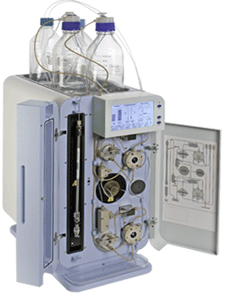
–
–
Dear valued customer,
It is with a heavy heart that we stop production of the Pinnacle PCX post-column system. A myriad of production issues has led us to develop a replacement instrument. We have a limited number of new Pinnacle PCX components remaining that we can build with, so we plan to stop production on March 1, 2020 (while supplies last). However, we will have Pinnacle PCX replacement components available until January 2030 to support our customers’ ongoing maintenance and repair needs.
Onyx PCX – New and Improved Instrument
We have taken this as an opportunity to improve on the Pinnacle PCX design! Our new instrument, the Onyx PCX, has the following improvements and highlights:
Color
The color on the Onyx PCX was updated to be more modern and now the color gradient on the column compartment door mirrors its temperature gradient capability.
Size
The Onyx PCX is slightly larger to allow easier access to the inner compartments. This makes assembly and maintenance easier and faster.
Reagent Tray
The Onyx PCX reagent tray is much larger and can now be used as secondary containment for the reagent bottles. In case of a spill, the reagent tray can hold much more liquid than the Pinnacle reagent tray. There are also handles for easy removal.
LCD
The new larger LCD shows more details of what the instrument is doing. This makes it easy to see the system’s status at a glance.
Reactor
The Onyx PCX reactor is slightly smaller with more efficient heating and allows for field calibration by a trained engineer.
Pump and Valve Motors
The Onyx PCX Pump and Valve motors use different power than the Pinnacle PCX Pump and Valve motors. These are married to the board components and are not backwards compatible.
Column Compartment
No physical differences but we’ve enabled the Onyx PCX column heater to be calibrated in the field by a trained engineer.
Communication with PC
The Onyx PXC communicates exclusively via USB connection to the PC.
Software
The Onyx PCX Control Software has a different look to match the new display.
User Journal
The new User Journal feature records method, sequence details, run times, changes, and error messages for audit compliance.
Contact Pickering Technical Support (support@pickeringlabs.com) for any questions or contact our Customer Service Team (orders@pickeringlabs.com) with quotation requests.

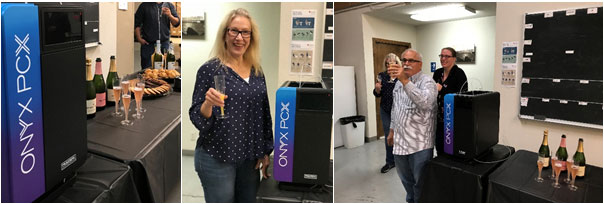
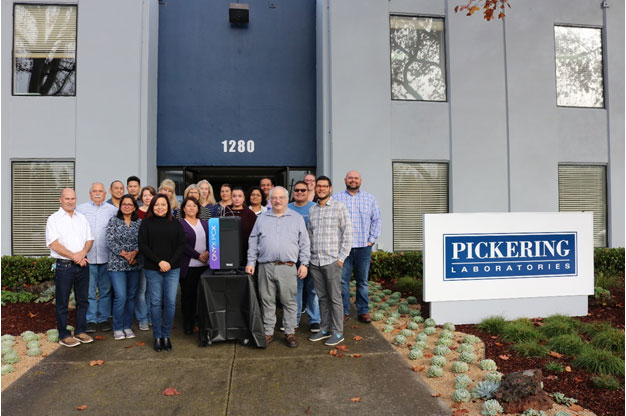
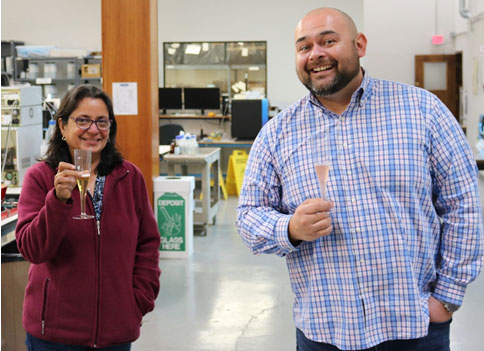
 In case you’ve missed our recent activity, here is a summary of the new products we made available this year. Look for more exciting product testing solutions and post-column applications in the New Year!
In case you’ve missed our recent activity, here is a summary of the new products we made available this year. Look for more exciting product testing solutions and post-column applications in the New Year! Pickering Labs would like to congratulate all of our winners for our previous newsletter’s I’m not seeing any peaks! Carbamates edition Quiz: Tom Schneider from Suffolk County Water Authority, Narjes Ghafoori from LA County Environmental Toxicology Lab, and Jiufeng Fan from Glaxo Smith Kline, and Dr. David Green from Pepperdine University.
Pickering Labs would like to congratulate all of our winners for our previous newsletter’s I’m not seeing any peaks! Carbamates edition Quiz: Tom Schneider from Suffolk County Water Authority, Narjes Ghafoori from LA County Environmental Toxicology Lab, and Jiufeng Fan from Glaxo Smith Kline, and Dr. David Green from Pepperdine University.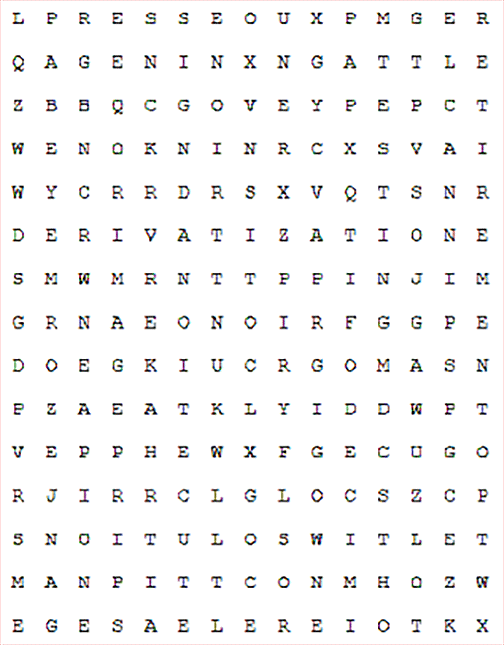



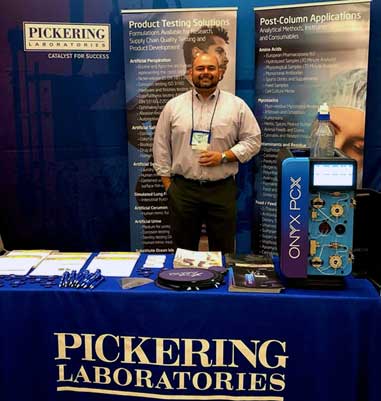
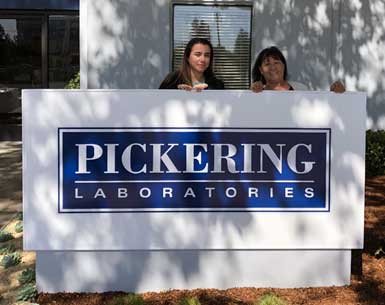
 The North American Chemical Residue Workshop (NACRW), formerly known as the Florida Pesticide Residue Workshop, was held in Naples, Florida. For the 56th consecutive year, laboratory professionals met to discuss the latest trends in the analysis of pesticides, veterinary drugs and other chemical residues. The big topics at this meeting were cannabis analysis, novel and emerging contaminants in drinking water and food matrices, and finally trends in veterinary drug residue control. Sareeta Nerkar and Maria Ofitserova both attended this year, representing Pickering Laboratories at our booth and in several key technical and vendor presentations.
The North American Chemical Residue Workshop (NACRW), formerly known as the Florida Pesticide Residue Workshop, was held in Naples, Florida. For the 56th consecutive year, laboratory professionals met to discuss the latest trends in the analysis of pesticides, veterinary drugs and other chemical residues. The big topics at this meeting were cannabis analysis, novel and emerging contaminants in drinking water and food matrices, and finally trends in veterinary drug residue control. Sareeta Nerkar and Maria Ofitserova both attended this year, representing Pickering Laboratories at our booth and in several key technical and vendor presentations.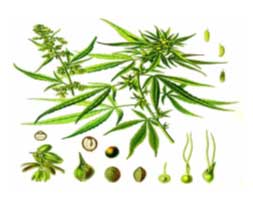 Pickering Laboratories has developed a new post-column derivatization method to analyze cannabinoids in cannabis plants and cannabis-containing edible products. This post-column method is based on reaction with Fast Blue Salt reagent under basic conditions, a well-known color-forming reaction that is used in drug tests to detect cannabinoids via test-tube methods and thin-layer chromatography. After derivatization, detection at 475 nm is performed using a UV/Vis detector. The same post-column method was used for analyzing cannabinoids in hemp but with a modified sample preparation procedure that was easier and faster.
Pickering Laboratories has developed a new post-column derivatization method to analyze cannabinoids in cannabis plants and cannabis-containing edible products. This post-column method is based on reaction with Fast Blue Salt reagent under basic conditions, a well-known color-forming reaction that is used in drug tests to detect cannabinoids via test-tube methods and thin-layer chromatography. After derivatization, detection at 475 nm is performed using a UV/Vis detector. The same post-column method was used for analyzing cannabinoids in hemp but with a modified sample preparation procedure that was easier and faster.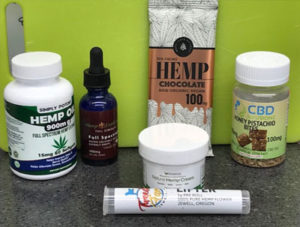 The United States 2018 Farm Bill changed the legal status of both domestic hemp cultivation and manufacturing of products that include parts or derivatives of hemp plants, including cannabidiol (CBD) derived from hemp. Moving forward, after obtaining the approval from the USDA, the individual States will assume primary regulatory authority over the hemp industry. The States need to present their plans for regulating hemp industry and otherwise be subject to USDA regulations. Unfortunately, there are several issues causing delays with release of standardized rules, the main problem being the absence of Federal delta-9 tetrahydrocannabinol (THC) testing standards. Testing for the presence of THC is necessary to distinguish hemp from marijuana.
The United States 2018 Farm Bill changed the legal status of both domestic hemp cultivation and manufacturing of products that include parts or derivatives of hemp plants, including cannabidiol (CBD) derived from hemp. Moving forward, after obtaining the approval from the USDA, the individual States will assume primary regulatory authority over the hemp industry. The States need to present their plans for regulating hemp industry and otherwise be subject to USDA regulations. Unfortunately, there are several issues causing delays with release of standardized rules, the main problem being the absence of Federal delta-9 tetrahydrocannabinol (THC) testing standards. Testing for the presence of THC is necessary to distinguish hemp from marijuana.